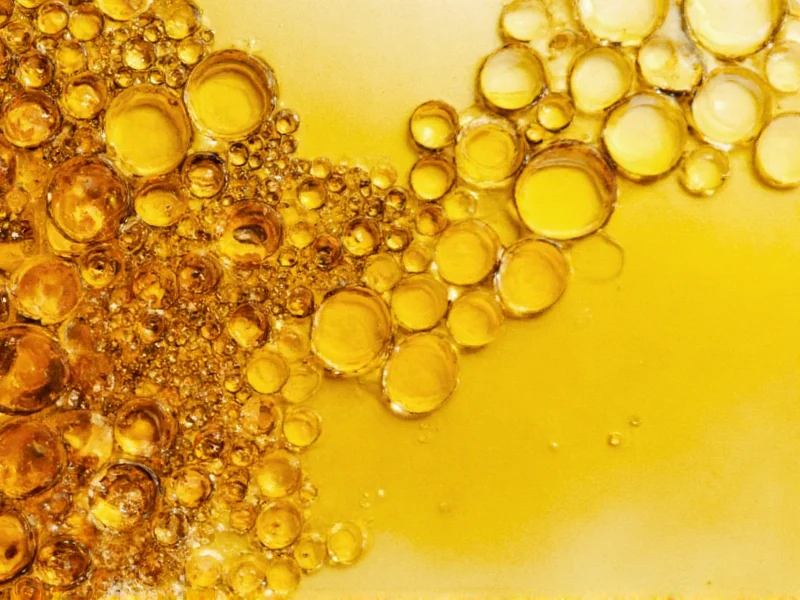Volatile oils represent one of nature's most fascinating chemical defense and communication systems. These complex organic compounds form through specialized metabolic pathways in plants, primarily serving ecological functions like attracting pollinators, repelling herbivores, and facilitating plant-to-plant communication. Understanding their properties helps explain why certain plants have evolved specific aromatic profiles that humans have learned to harness for various applications.
Chemical Properties Defining Volatility
The volatility of these oils stems from their molecular structure and weight. Most volatile oil components are small organic molecules with molecular weights under 300 daltons, allowing them to transition easily from liquid to vapor state. This property distinguishes them from fixed oils, which contain larger triglyceride molecules that remain liquid or solid at room temperature.
Key factors influencing volatility include:
- Molecular weight (lower weight = higher volatility)
- Intermolecular forces (weaker forces = easier evaporation)
- Temperature sensitivity (most volatile oils begin evaporating around 20°C/68°F)
- Surface area exposure (greater exposure accelerates evaporation)
| Property | Volatile Oils | Fixed Oils |
|---|---|---|
| Chemical Composition | Terpenes, phenols, aldehydes | Triglycerides, fatty acids |
| Evaporation Rate | Complete evaporation at room temperature | Leave permanent residue |
| Boiling Point Range | 150-300°C (302-572°F) | 300-400°C (572-752°F) |
| Solubility in Water | Low (0.1-5%) | Negligible |
| Primary Natural Function | Plant defense, pollination | Energy storage |
Natural Sources and Extraction Methods
Plants produce volatile oils in specialized structures including glandular trichomes, resin ducts, and oil cells. The concentration varies dramatically by species, plant part, and environmental conditions. Citrus fruits contain volatile oils in their peel glands, while mint family plants store them in leaf epidermal cells.
Three primary extraction methods preserve these delicate compounds:
- Steam distillation - The most common method where steam passes through plant material, carrying volatile compounds that are then condensed and separated
- Cold pressing - Used primarily for citrus oils where mechanical pressure releases oils from peel glands
- Solvent extraction - Employed for delicate flowers like jasmine where heat would degrade compounds
Yield varies significantly by plant source. It takes approximately 60 roses to produce just one drop of rose oil, while citrus fruits yield more generously at about 50 lemons per ounce of oil. This explains the dramatic price differences between various volatile oils.
Volatile Oils vs. Essential Oils: Terminology Clarification
While often used interchangeably, these terms have distinct technical meanings. Volatile oil refers specifically to the chemical property of evaporating readily, while essential oil denotes the concentrated hydrophobic liquid containing the "essence" of the plant.
In scientific literature, "volatile oil" describes the physical property, whereas "essential oil" appears more frequently in commercial and therapeutic contexts. Some compounds classified as essential oils contain non-volatile components, while certain volatile plant compounds aren't considered essential oils. This terminology confusion stems from historical usage rather than scientific precision.
Applications Across Industries
Volatile oils serve diverse functions across multiple sectors due to their unique properties:
Industrial Applications
The chemical industry utilizes volatile oils as natural solvents, flavor precursors, and fragrance bases. Citrus oils serve as eco-friendly degreasers, while terpenes function as starting materials for synthesizing more complex compounds. The global market for plant-derived volatile compounds continues expanding as industries seek sustainable alternatives to petroleum-based chemicals.
Therapeutic Uses with Scientific Context
While traditional medicine has used volatile oils for centuries, modern research provides nuanced understanding of their effects. Certain compounds demonstrate antimicrobial properties in laboratory settings, though clinical evidence for many therapeutic claims remains limited. The inhalation of volatile compounds can affect the limbic system, potentially influencing mood and stress responses through olfactory pathways.
Perfumery and Cosmetics
The fragrance industry relies heavily on volatile oils as top, middle, and base notes in perfumes. Their varying evaporation rates create the scent's development over time. Natural volatile oils command premium prices compared to synthetic alternatives, though both serve important roles in modern perfumery.
Safety Considerations for Handling Volatile Oils
Proper handling of volatile oils requires understanding their chemical properties and potential hazards:
- Storage requirements - Dark glass containers in cool, stable temperatures prevent degradation
- Flammability concerns - Many volatile oils have low flash points requiring careful handling away from ignition sources
- Skin sensitivity - Proper dilution is essential as undiluted oils can cause irritation or sensitization
- Photo-toxicity risks - Certain citrus oils can cause skin reactions when exposed to sunlight
Regulatory standards vary globally, with organizations like ISO establishing quality specifications for many volatile plant oils. Reputable suppliers provide material safety data sheets (MSDS) detailing specific handling requirements for each oil.
Environmental and Sustainability Considerations
The growing demand for volatile oils raises important sustainability questions. Some plant species face overharvesting pressures, particularly slow-growing trees like sandalwood. Sustainable practices include:
- Cultivating alternative species with similar chemical profiles
- Implementing fair trade harvesting practices
- Developing biotechnological production methods
- Using waste products from other industries (like citrus peels)
Researchers continue exploring cellular agriculture techniques to produce volatile oil compounds without harvesting whole plants, potentially reducing environmental impact while maintaining chemical authenticity.











 浙公网安备
33010002000092号
浙公网安备
33010002000092号 浙B2-20120091-4
浙B2-20120091-4